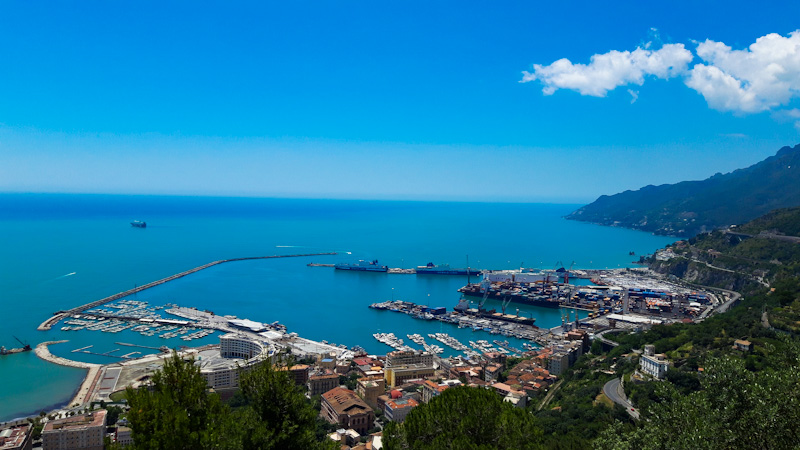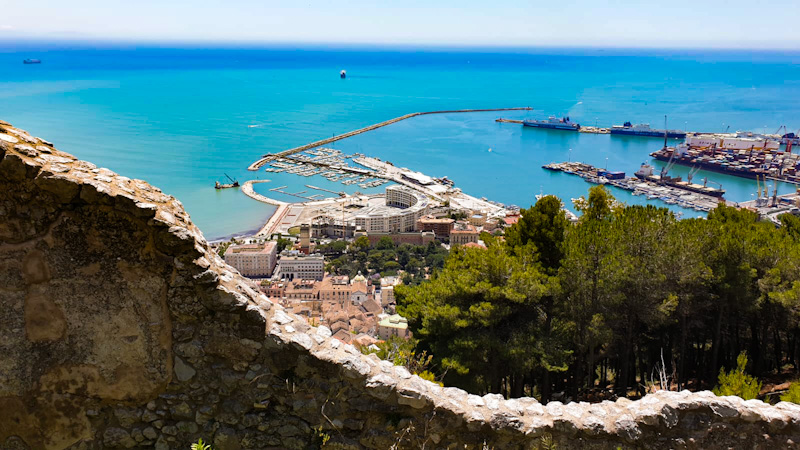The history of Salerno begins with the Etruscans, like most of the cities of the Amalfi Coast. Subsequently, Salerno was a Roman colony. They changed its original name “Irna” into “Salernum” and founded the Roman castrum on mount Bonadies. Like all the other cities of the south and the coast, Salerno was invaded by the barbarians and passed under the dominion of the Goths and the Byzantines. The maximum splendour for the city of Salerno was, however, with the arrival of the Lombards, who built, on the walls of the Roman castrum, the imposing Arechi Castle, subsequently modified and enlarged by the Normans, their successors, which still dominates Salerno from above.
In addition to leaving behind this magical place, the Lombards and the Normans have left the city of Salerno with a strong Northern European connotation. For this reason, Salerno, among the most beautiful cities in Southern Italy, also has another face: that one of a Northern European city. In what sense? A fan of the history of Salerno has explained to me the reasons for this and I want to share them with you in this article.

“Having today achieved, after many efforts, the geopolitical unity of the whole European continent, we want to remember that the city of Salerno, already in the past, more than other cities in the south of Italy and in Italy itself, has had, since the late Middle Ages, a Northern European connotation. So, in this article I want to entice the European reader looking for traces that recall his origin even in a territory he would never imagine familiar to him. Indeed, it can be said that a good part of the inhabitants of Salerno is, in physical appearance, similar to his genius.
In short, remember that Salerno in the 6th century AD became Lombard, being annexed to Duchy of Benevento. To say that the Lombards themselves were destined to the south of Italy by Charlemagne, who, having expelled them from the territories of northern Italy, had them transferred and made them Vassals of the Church to which the south of Italy was destined and entrusted.
Towards the 774 AD the Principe Arechi II moved the Principality’s headquarters to Salerno, then in the year 839 AD it became an independent Principality, thus constituting two Principalities. In this period, the city of Salerno saw itself prosperous and rich.
Towards the year 1020, given the constant incursions from the sea of the Saracene ships, the strength of the Lombards was put to the test so much that they had to make use of Norman mercenaries; these ones, by chance (in transit from Salerno and coming from a pilgrimage to Jerusalem) were used to counter one of the usual Saracen raids.
Their contribution was so valiant that the Lombard nobility and the people themselves went out of their way to make them stay, even promoting the call of other knights from Normandy. The Normans (north man) were nothing else that Vikings descended, by raids, from Norway to France and settled there also by virtue of a royal marriage between their leader Rollone (Rolf Ganger) with a Carolingian descendant, daughter of Charles the simple, this around the year 896 AD.
As already mentioned, over time the Normans became, by power and strength, superior to the Lombards up to prevail in the year 1076 at the hands of Duke Roberto di Altavilla known as Guiscardo (the Smart).
By this moment, Salerno acquired a central position in the development and growth of the Norman domain and the future Norman Kingdom.“
–Edited by Maurizio Manzo, from Salerno and passionate about the history of his city
I hope that this focus on the history of Salerno has sparked in the reader the curiosity to visit this beautiful city. Very often, travelling, as well as knowing new places and new realities, is also looking for traces that remember one’s origins.
What are you waiting for to organize your next holidays here? 🙂

